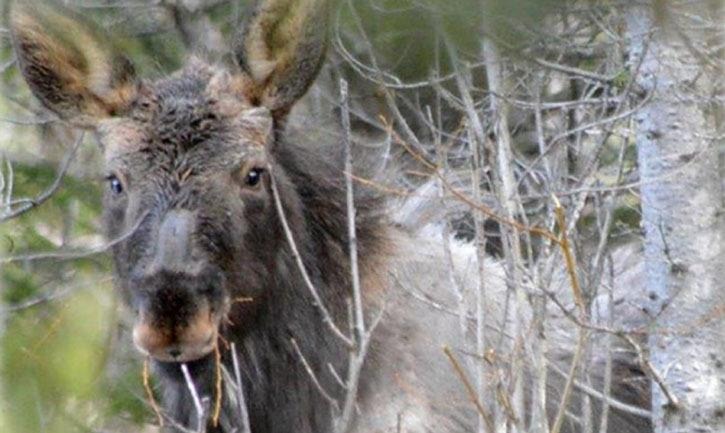Sightings of 'ghost moose' have long been reported in the B.C. wilderness, and now a systematic effort to collect reports is showing an increase in winter tick infestation that drives moose to rub away their dark winter hair.
The second year of a B.C. government-led collected more than 500 reports, mostly from northern B.C. Province-wide, 61 per cent of moose sightings reported visible hair loss, up from 50 per cent in the pilot project year of 2015.
Heavy tick infestation can be fatal to moose, causing them to lose much of their hair and take time away from feeding to groom or rub themselves during early spring when they are at their weakest.
As with mountain pine beetle and other bark beetles, winter tick populations rise with warmer conditions. Pregnant females have a higher survival rate because they aren't dropping off into snow after engorging themselves on the host animal's blood and leaving to lay eggs.
The last major infestation in the B.C. Interior was noted in 1999, after unusually warm conditions the previous year. Cold fall temperatures and early snow can also reduce ticks at their larval stage.
Based on 2016 snow data, the survey predicts increased tick severity in 2017 for the Skeena and Omineca regions.
The tick monitoring program is publicized through local newspapers and radio, outdoor magazines and distribution to conservation officers, wildlife biologists, hunters, trappers and the general public. Responses increased after the pilot year, but remained low in the Cariboo, Kootenay, Lower Mainland and Okanagan regions.
Winter ticks also affect whitetail and mule deer, elk and bison, but mainly moose. They are not a hazard for humans.
There are three subspecies in B.C., the large Alaskan Moose in the northwest, the Northwestern Moose across most of the province and the smaller Shiras Moose in the East Kootenay and extending into the U.S.
Moose populations are via hunting regulations and access restrictions.



